Unveiling Why Police Dogs Are Called K9
Did you know that the first K-9 training facility was established in Ghent, Belgium in 1899? This marked the beginning of a new era for police dogs and their important role in law enforcement. From strays that became station mascots to highly trained and specialized units, the history of police dogs is fascinating. Let’s delve into the origin and significance of these furry heroes, commonly known as K-9s.
Key Takeaways:
- Police dogs, known as K-9s, have a long history dating back to the late 19th century.
- The first K-9 training facility was established in Ghent, Belgium in 1899.
- K-9 units play a crucial role in law enforcement, assisting officers in various tasks.
- K-9 handlers are responsible for the care and training of police dogs, forming a close bond with their canine partners.
- Different breeds, such as German Shepherds and Belgian Malinois, are used for different tasks in K-9 units.
The Role of K9 Dogs in Law Enforcement
K-9 dogs play a crucial role in law enforcement. These highly trained working dogs assist officers in various tasks, making them invaluable assets to law enforcement agencies. From detecting narcotics, firearms, and explosives, to locating cadavers, K-9 dogs possess specialized skills that aid in investigations and public safety.
The selection process for police dogs is rigorous, focusing on factors such as good health, temperament, and training ability. Once selected, these dogs undergo extensive training which includes obedience, agility, tracking, property searches, area searches, building searches, handler protection, and apprehension of criminals. They are trained to recognize their handler’s uniform and respond to specific commands, enhancing the partnership and effectiveness of the team.
K-9 dogs are instrumental in tracking suspects, finding missing persons, locating evidence, and apprehending criminals. Their keen senses and specialized training allow them to pick up on scents and cues that may go undetected by humans. Whether it’s sniffing out illicit substances or following a scent trail to locate a suspect, police dogs provide invaluable assistance in investigations.
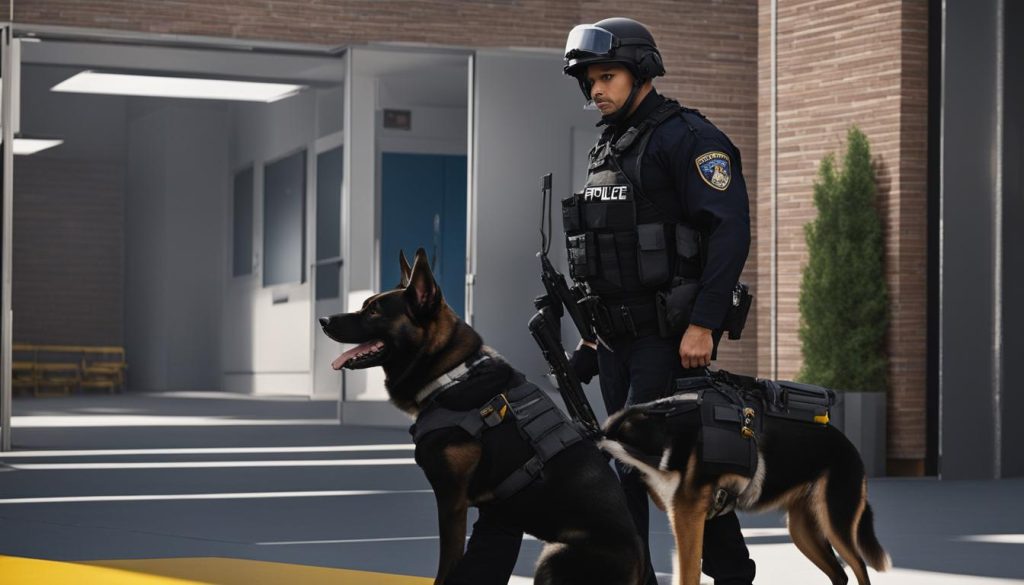
| Tasks | Working Dogs in Law Enforcement |
|---|---|
| Detecting narcotics, firearms, and explosives | German Shepherds, Belgian Malinois, Springer Spaniels |
| Tracking suspects, finding missing persons | German Shepherds, Bloodhounds |
| Locating evidence | Labrador Retrievers, Belgian Malinois |
| Apprehending criminals | German Shepherds, Belgian Malinois |
K9 Handlers and Their Responsibilities
In a K-9 unit, handlers play a vital role in the care and training of police dogs. These dedicated individuals form a special bond with their canine partners, as the dogs become an integral part of their families.
As K-9 handlers, I am responsible for various aspects of my police dog’s well-being. This includes ensuring their health, proper nutrition, and regular exercise. I also handle grooming and veterinary appointments to maintain their overall fitness and appearance.
The training of police dogs is another essential responsibility of a K-9 handler. We work closely as a team to develop the necessary skills for tasks such as obedience, agility, tracking, area searches, and apprehension techniques. The training focuses on reinforcing their natural instincts and ensuring they can perform effectively in high-stress situations.
One unique responsibility that K-9 handlers have is the privilege of naming their police dogs. Each dog is carefully selected based on their health, disposition, and aptitude for training. Providing them with fitting names not only personalizes their identity within the unit but also reflects their character and serves as a source of motivation and connection for both the handler and the dog.
Having skilled and committed K-9 handlers is crucial for the overall success of a K-9 unit. The expertise and dedication of handlers enhance the effectiveness of the unit in law enforcement operations, ensuring a strong partnership between human and canine counterparts.
Benefits of K-9 Units
The presence of K-9 units in law enforcement offers numerous benefits. The specialized skills and training of police dogs enable them to assist officers in various tasks and provide valuable support in crime prevention and apprehension of suspects.
- Enhanced Senses: Police dogs have a heightened sense of smell and hearing, allowing them to detect narcotics, explosives, firearms, and even locate missing persons.
- Rapid Response: K-9 units can quickly search large areas, track fleeing suspects, and locate evidence, significantly reducing the time it takes to apprehend criminals.
- Improved Officer Safety: The presence of a police dog often acts as a deterrent to criminals, providing an added layer of protection for officers. K-9 units can also assist in handler protection during potentially dangerous situations.
- Community Engagement: K-9 units serve as a positive outreach tool, helping to build trust and strengthen the relationship between law enforcement agencies and the communities they serve.
- Cost-Effective: Despite the initial investment in training and equipment, utilizing K-9 units can be cost-effective in the long run. The efficiency and effectiveness of police dogs can lead to increased successful operations and reduced reliance on additional resources.
Overall, the responsibilities shouldered by K-9 handlers, combined with the benefits of having these dedicated teams, demonstrate the valuable contributions and impact of K-9 units within law enforcement agencies.
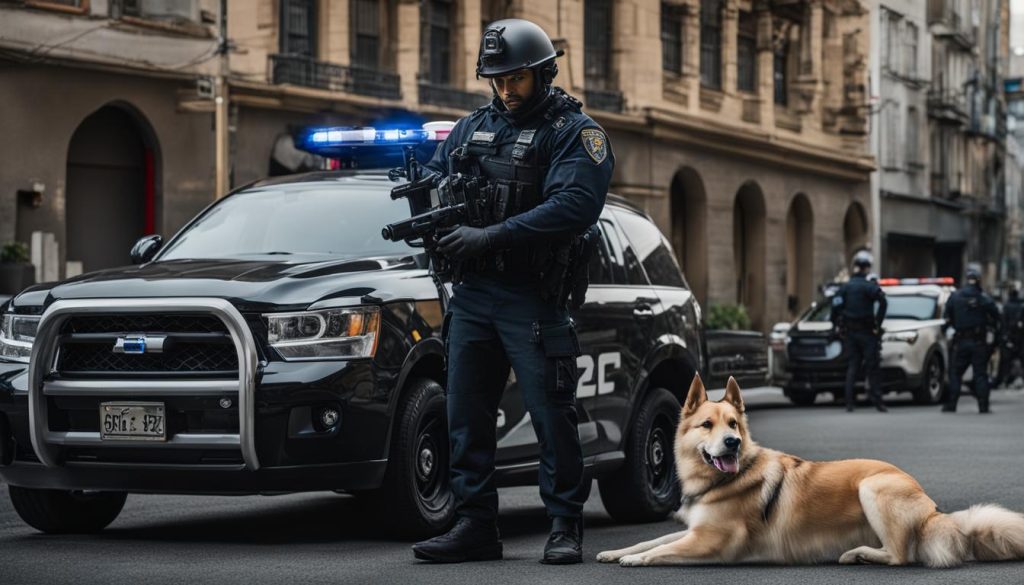
Different Breeds Used in K9 Units
K-9 units rely on a variety of dog breeds to perform different tasks in law enforcement. Each breed possesses unique qualities and skills that make them suitable for specific duties within the unit.
For general-purpose police dogs, German Shepherds and Belgian Malinois are widely utilized due to their intelligence, agility, and protective instincts. These breeds excel in tasks such as tracking, apprehending suspects, and providing protection to their handlers. Their strong work ethic and ability to adapt to different environments make them valuable assets in K-9 units.
When it comes to detection work, breeds like Springer Spaniels, Belgian Malinois, and Labrador Retrievers are commonly utilized. Their exceptional sense of smell and trainability make them well-suited for detecting narcotics, firearms, ammunition, and explosives. These breeds play a vital role in locating hidden contraband and ensuring public safety.
Breed Comparison:
| Breed | Main Traits | Specializations |
|---|---|---|
| German Shepherds | Intelligence, agility, protective instincts | Tracking, apprehending suspects, protection |
| Belgian Malinois | Intelligence, agility, protective instincts | Tracking, apprehending suspects, protection |
| Springer Spaniels | Exceptional sense of smell, trainability | Narcotics and explosives detection |
| Labrador Retrievers | Exceptional sense of smell, trainability | Narcotics and explosives detection |
The selection of dog breeds in K-9 units is based on their individual characteristics and aptitude for specific tasks. By leveraging the unique strengths of each breed, law enforcement agencies can effectively tackle various challenges and ensure the safety of their communities.
The Impact of K9 Units in Law Enforcement
K-9 units have revolutionized law enforcement, providing invaluable services that have significantly impacted crime prevention and public safety. These specialized units, comprising highly trained police dogs and their skilled handlers, have proven to be instrumental in apprehending suspects, detecting contraband, and uncovering crucial evidence.
The presence of a K-9 unit alone acts as a powerful deterrent to criminals. The sight of a well-trained police dog and its handler instills fear and caution among wrongdoers, often leading them to surrender peacefully. The reputation and effectiveness of K-9 units precede them, making them a formidable force in law enforcement.
The heightened senses and specialized training of police dogs make them exceptionally adept at detecting hidden contraband. Whether it is narcotics, firearms, or other illicit substances, these highly trained canines can quickly locate and identify illegal substances that may otherwise go undetected by human law enforcement officers.
Furthermore, K-9 units play a crucial role in locating suspects who may attempt to evade capture. The tracking skills of police dogs allow them to follow scent trails swiftly and efficiently, increasing the chances of successful apprehension. This capability is particularly valuable in locating missing persons or suspects in large areas or dense environments.
The collaboration between K-9 dogs and their handlers is key to the success of these units. The strong bond and trust between the two enable seamless communication and teamwork, resulting in efficient operations and successful outcomes. The handlers’ expertise in reading their canine partners’ signals and commanding their actions enhances the effectiveness of K-9 units in various law enforcement scenarios.
The Benefits of K-9 Units
The benefits of K-9 units extend beyond their crime-fighting abilities. These units serve as a bridge between law enforcement agencies and communities, helping establish positive relationships and trust. The presence of police dogs makes officers more approachable and relatable, fostering a sense of security and cooperation within neighborhoods.
Moreover, K-9 units are highly cost-effective investments for law enforcement agencies. The specialized training undergone by police dogs and their handlers ensures optimal use of resources and the ability to respond to a broad range of situations. The speed and precision with which K-9 units can locate suspects and uncover evidence save valuable time and resources, enabling law enforcement agencies to allocate their personnel more efficiently.
The Impressive Track Record of K-9 Units
The success stories of K-9 units abound, with numerous arrests attributed to the diligent work of police dogs and their handlers. These brave canines have helped take dangerous criminals off the streets, preventing further harm to communities. Their efforts have led to convictions and the closure of criminal cases, providing justice and closure for victims and their families.
As an example, in a recent operation conducted by the K-9 unit in Toronto, several suspects involved in a major drug trafficking operation were apprehended. The dogs’ exceptional sniffing abilities allowed them to locate large quantities of narcotics hidden in concealed compartments, leading to multiple arrests and the dismantling of a significant criminal network.
K-9 units continue to prove their worth in various law enforcement agencies across Canada. Their relentless dedication, unwavering loyalty, and unparalleled expertise make them an indispensable asset in the fight against crime.
Legal Considerations for K9 Deployments
The use of police dogs in law enforcement has been closely scrutinized in terms of legal considerations. Court rulings have established the significance of providing suspects with a warning before deploying a police dog as a use of force tool. These court rulings have emphasized that a failure to give a verbal warning prior to releasing a police dog to apprehend a suspect can be deemed unconstitutional and an unreasonable use of force.
These legal considerations are grounded in the fundamental principle of providing suspects with the opportunity for peaceful surrender. By giving a warning, law enforcement agencies ensure that suspects are made aware of the potential consequences and are given a chance to comply without the need for escalated force.
It is of utmost importance for law enforcement agencies to adhere to these legal requirements when utilizing police dogs in their operations. Failure to do so can not only compromise the legality of the arrest but also erode public trust in law enforcement’s use of force practices.
| Court Rulings on K9 Announcements |
|---|
| Warning is a legal requirement |
| Failure to give a verbal warning is unconstitutional and an unreasonable use of force |
| Emphasizes the need for suspects to have the opportunity to peacefully surrender |
| Non-compliance with the requirement can compromise the legality of an arrest |
| Ensures public trust in law enforcement’s use of force practices |
The Future of K9 Units
In the ever-evolving world of law enforcement, the future of K-9 units holds exciting possibilities for advancements in training techniques and technology. As law enforcement agencies continually seek to enhance the effectiveness of their K-9 units, they are exploring innovative ways to train and equip their police dogs.
Technological advancements are expected to play a significant role in shaping the future of police dog training. Virtual reality training simulations are being developed to create realistic scenarios that allow K-9 teams to hone their skills in a safe and controlled environment. These simulations can mimic various situations, enabling dogs to become more adaptable and better prepared for real-world challenges.
Wearable devices designed specifically for police dogs are also on the horizon. These devices, equipped with sensors and GPS technology, can provide real-time data on a dog’s vital signs, location, and movement. This information can help handlers assess their dogs’ performance, monitor their well-being, and make more informed decisions in the field. The integration of wearable technology has the potential to revolutionize police dog training and strengthen the bond between handlers and their canine partners.
Furthermore, ongoing research is dedicated to developing new breeds that are specifically bred for police work. By selectively breeding dogs with the desired traits, law enforcement agencies aim to create a new generation of police dogs with enhanced capabilities. These advancements may include increased intelligence, improved scent detection abilities, and heightened physical attributes tailored to the demanding nature of police work.
- Canada Arrest Protocol: What Police Say Upon Arrest - June 12, 2025
- Can Police Disclose Who Reported You? Find Out Here - June 6, 2025
- 2025 Window Rebates Ontario: How to Save Money While Replacing Windows and Doors - April 24, 2025
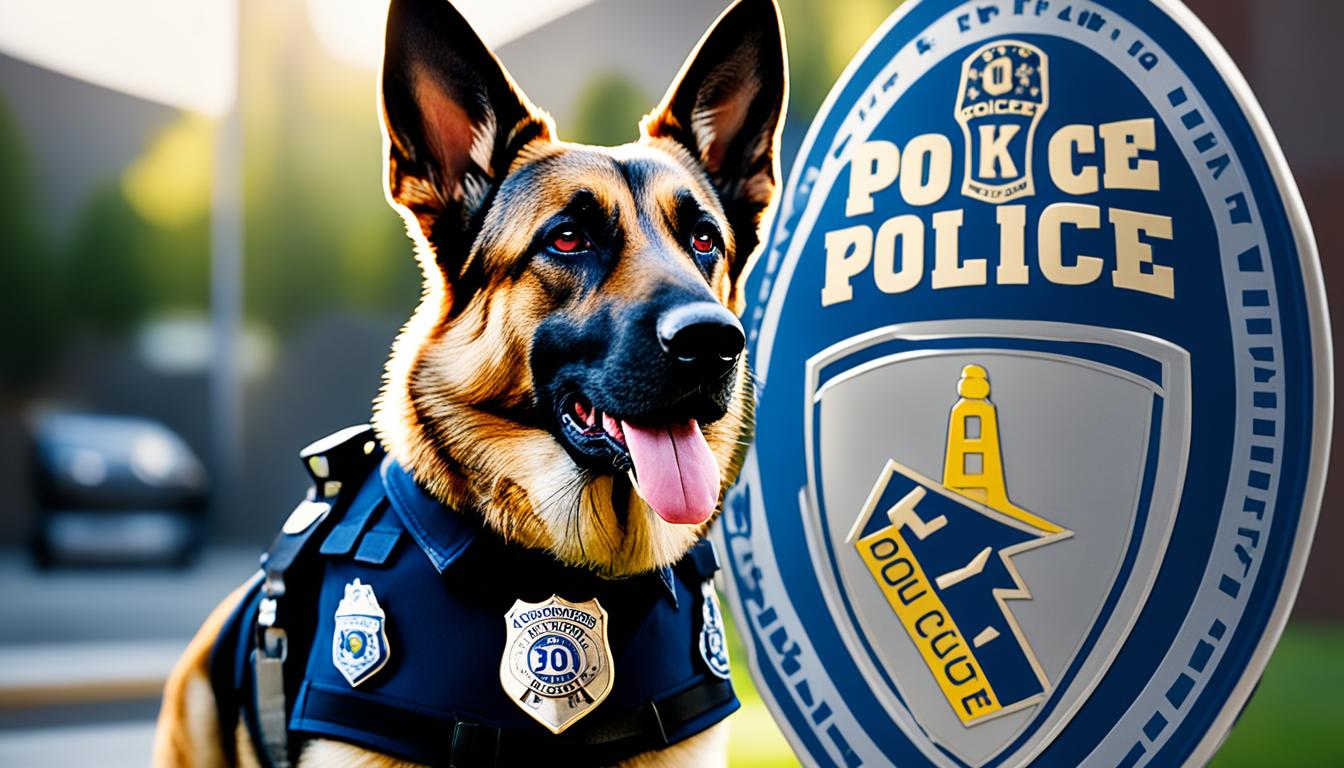
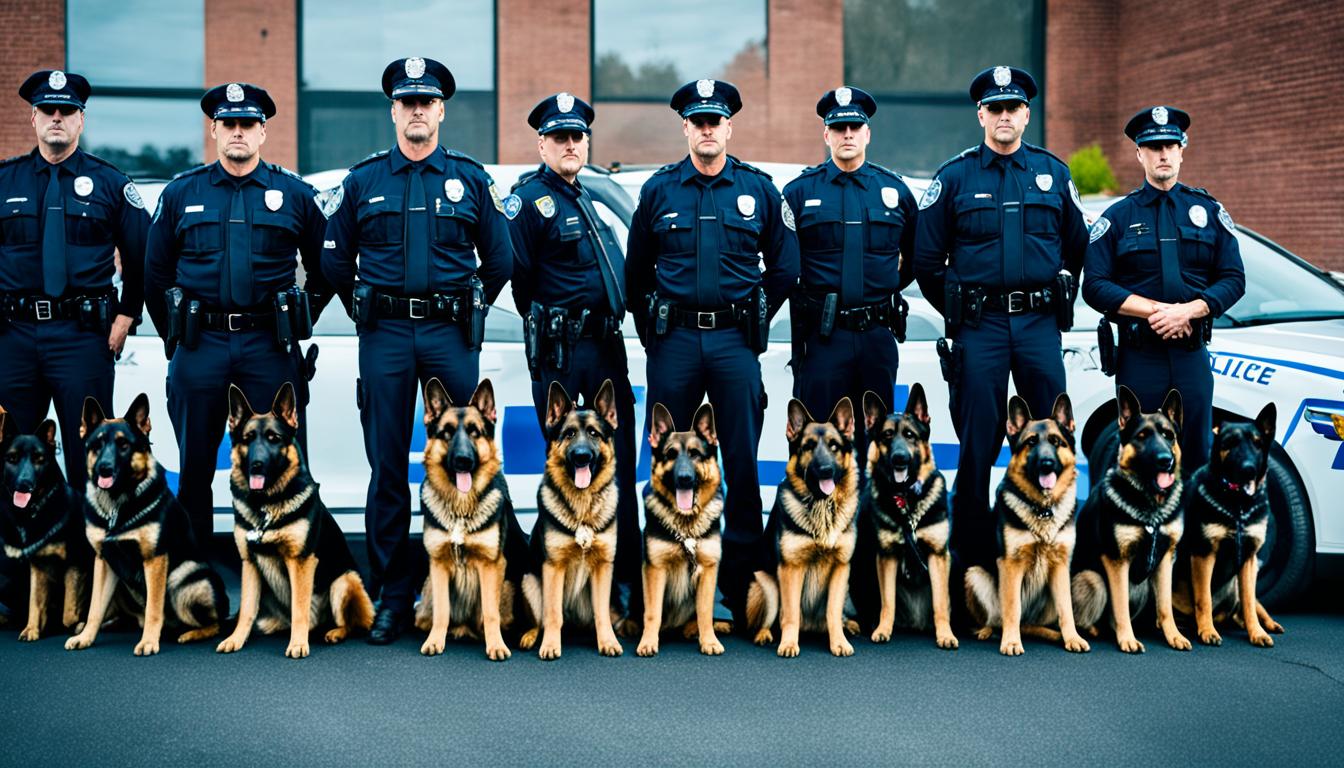
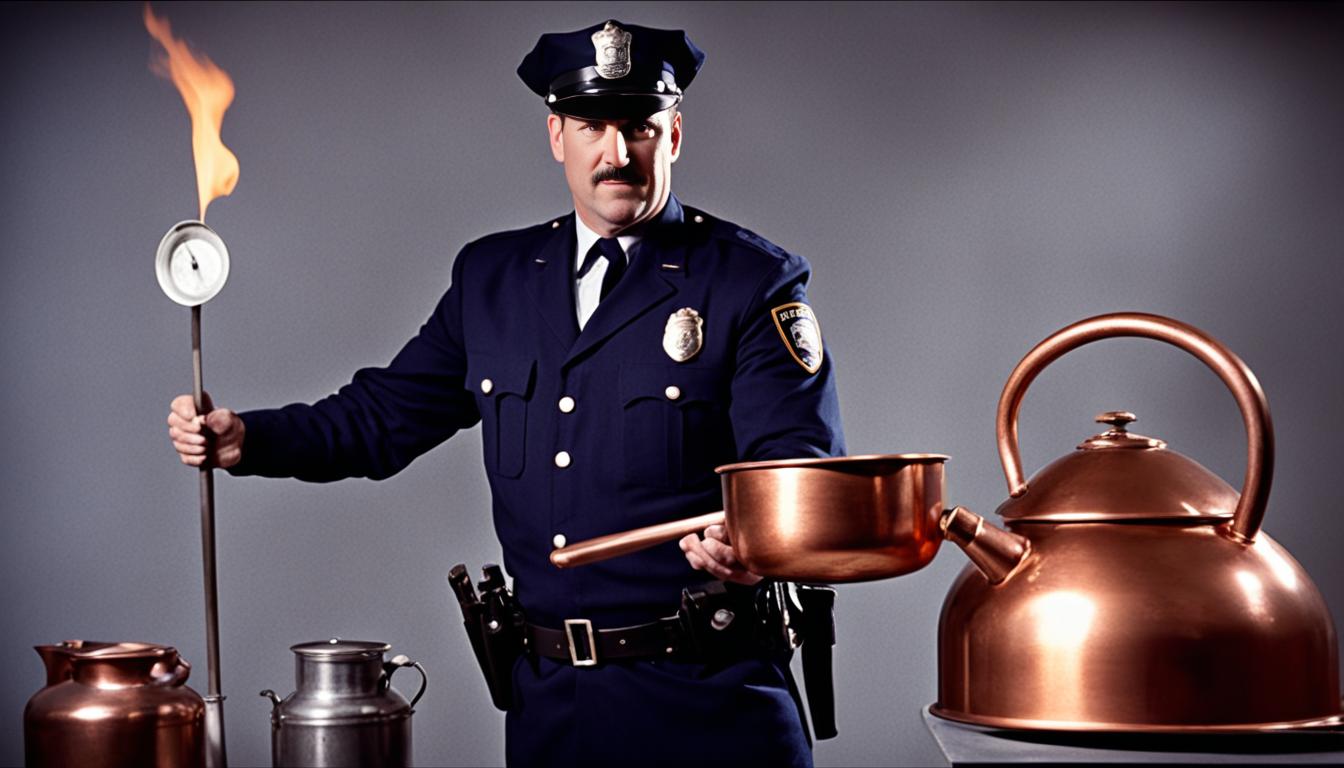
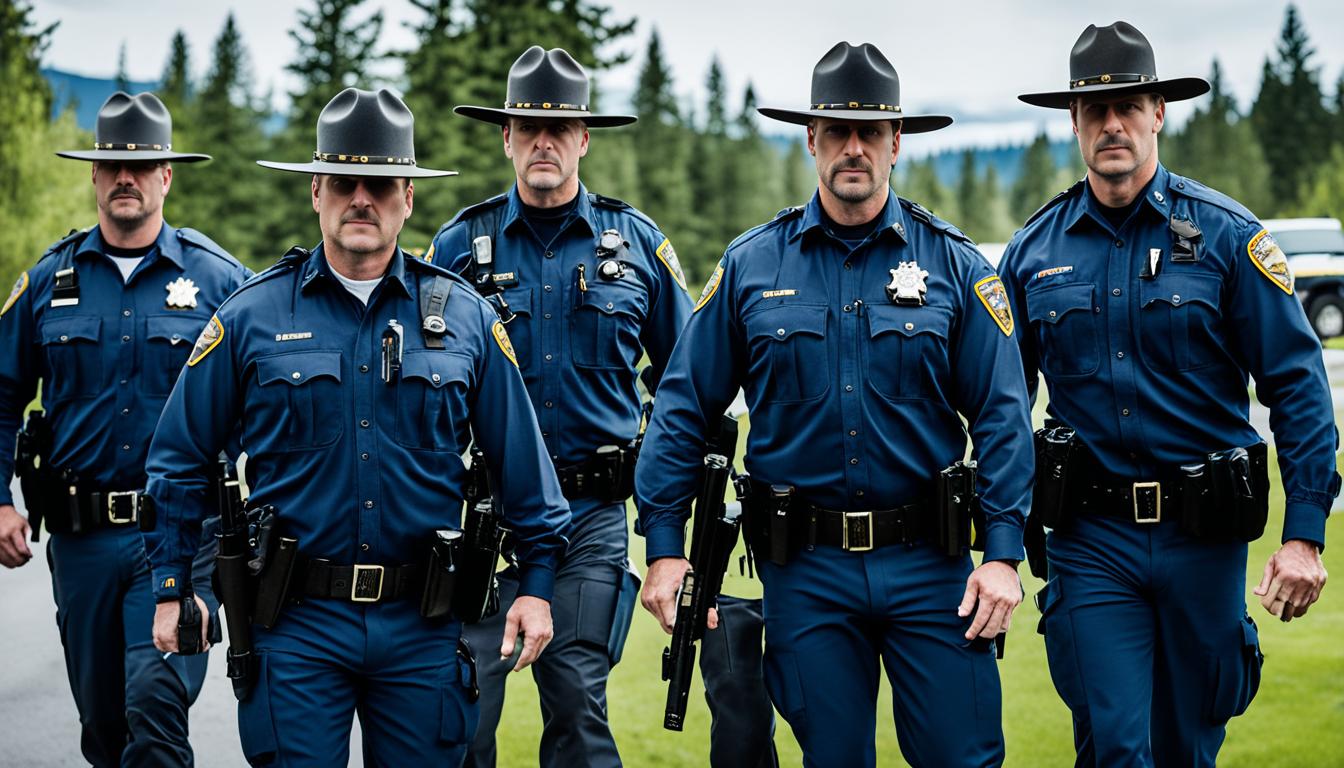

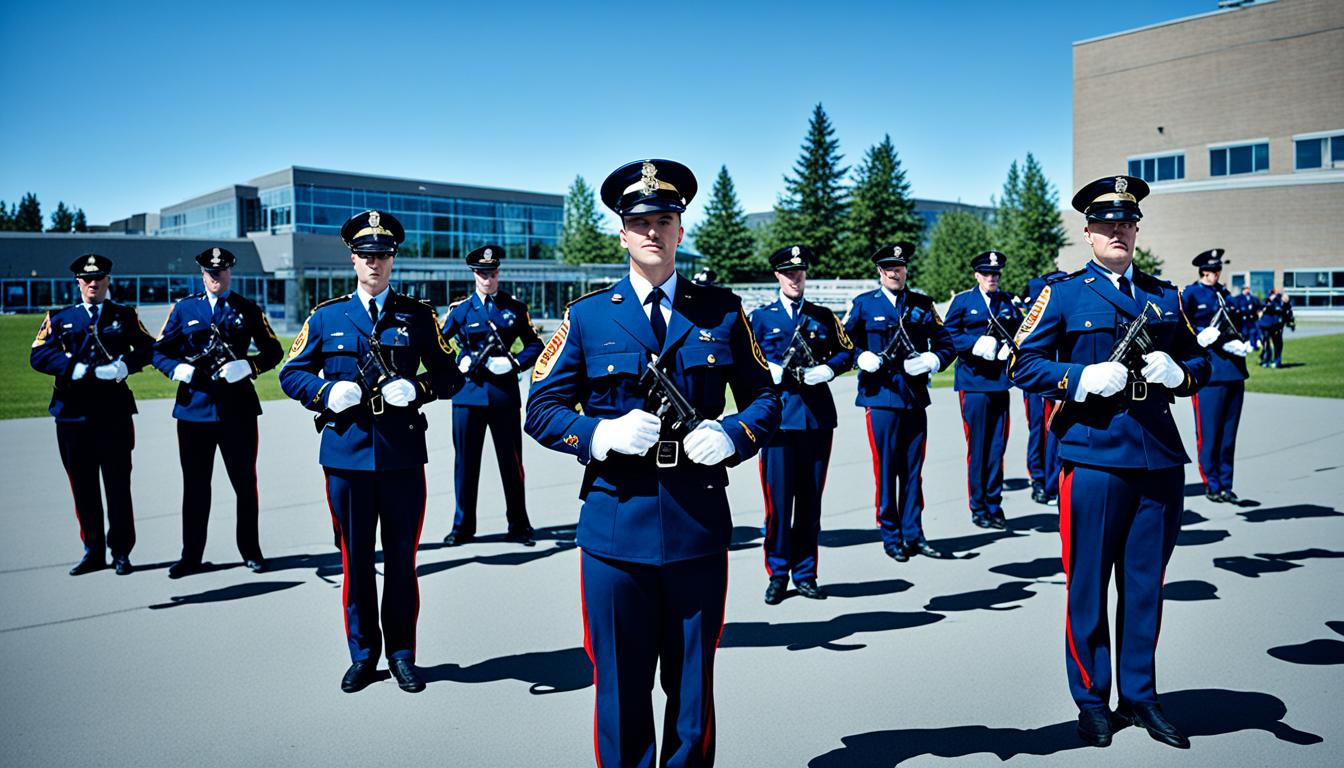
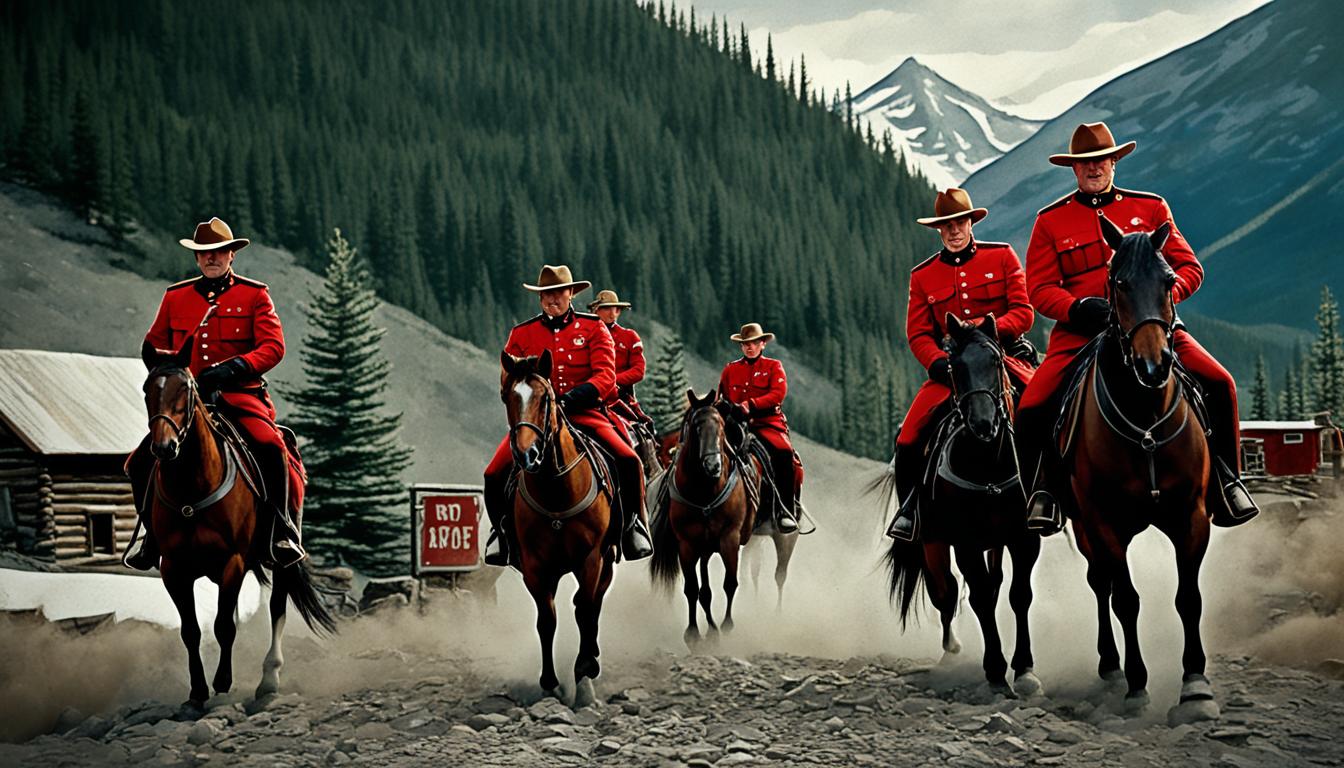
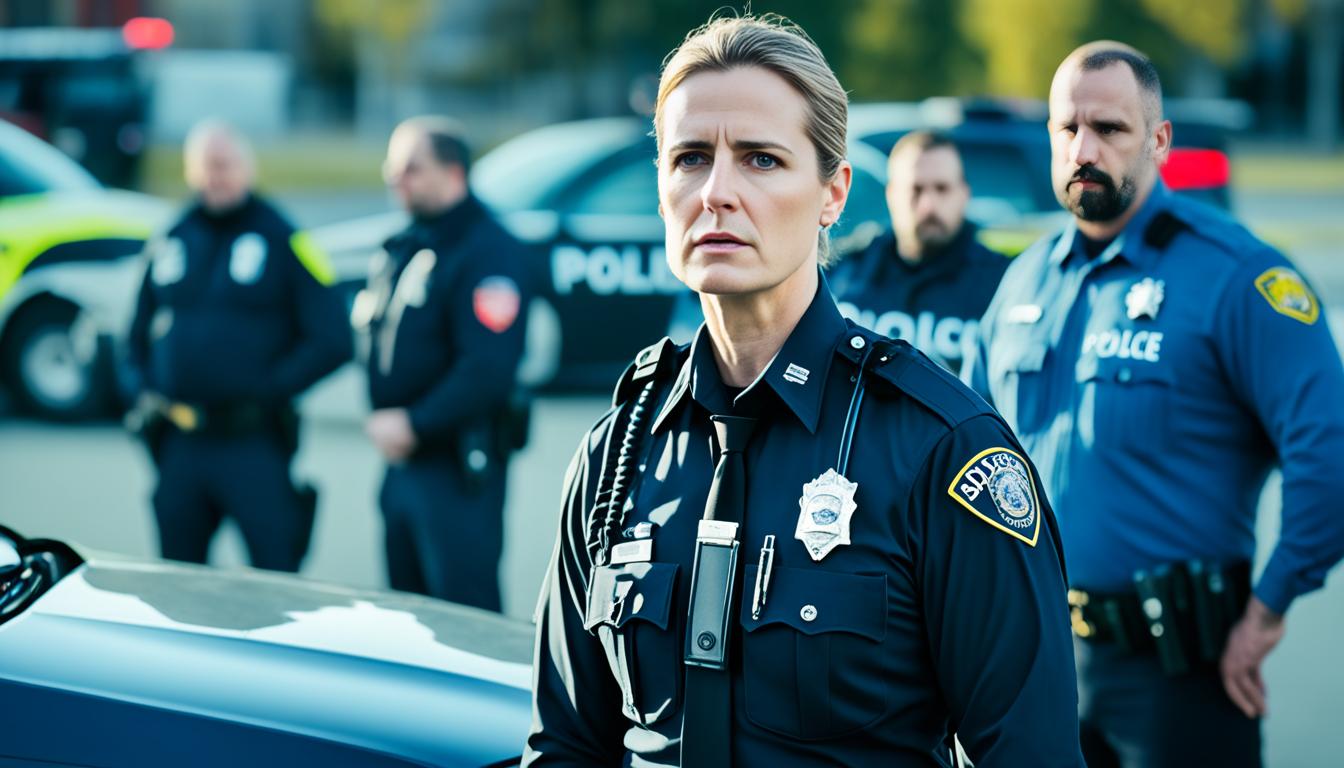
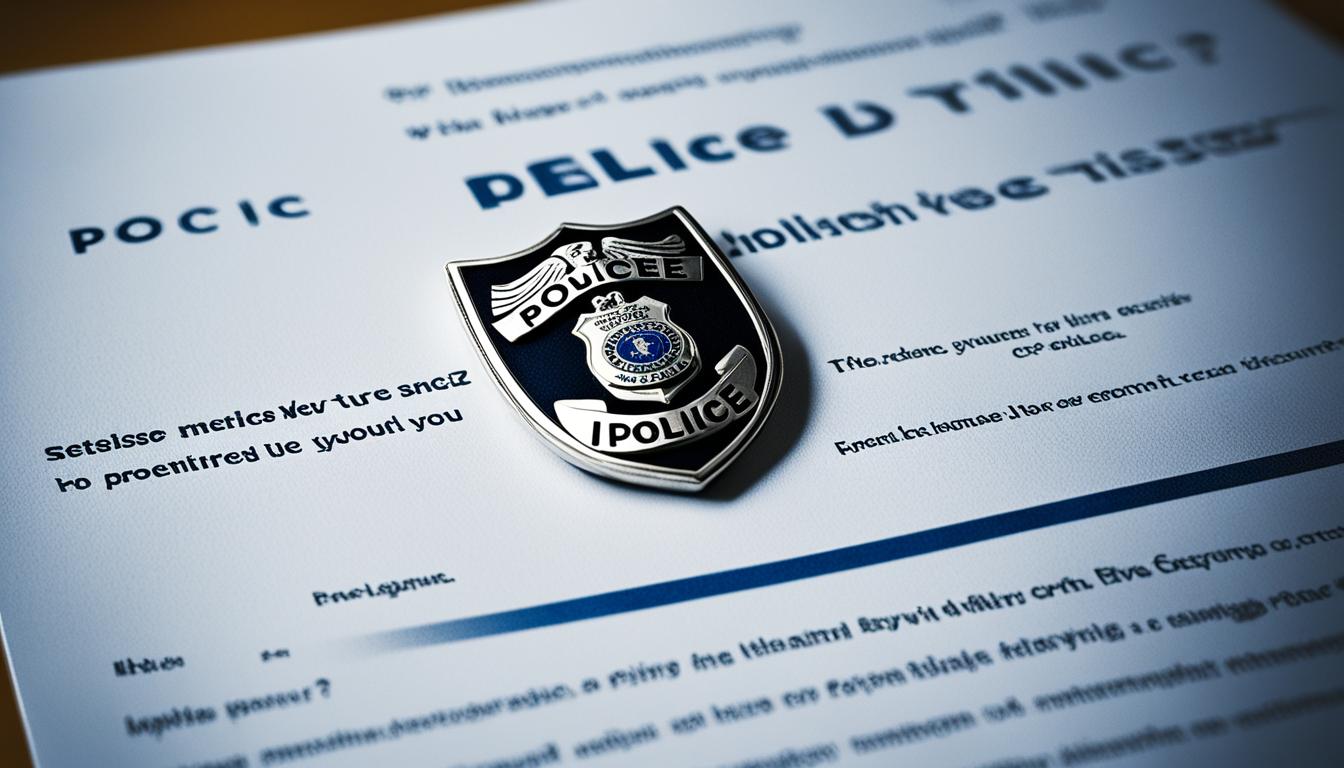











Post Comment